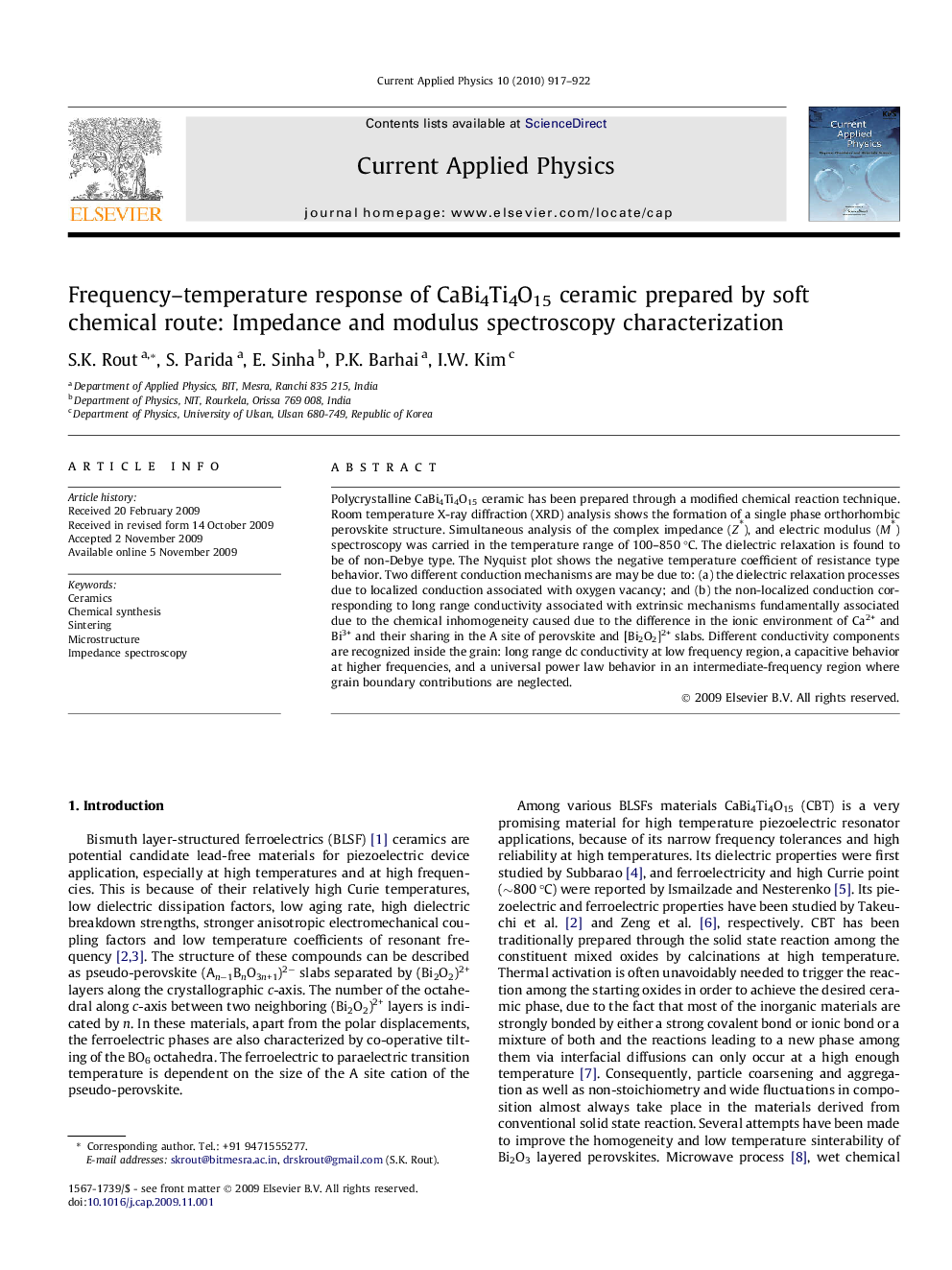| Article ID | Journal | Published Year | Pages | File Type |
|---|---|---|---|---|
| 1788629 | Current Applied Physics | 2010 | 6 Pages |
Polycrystalline CaBi4Ti4O15 ceramic has been prepared through a modified chemical reaction technique. Room temperature X-ray diffraction (XRD) analysis shows the formation of a single phase orthorhombic perovskite structure. Simultaneous analysis of the complex impedance (Z∗), and electric modulus (M∗) spectroscopy was carried in the temperature range of 100–850 °C. The dielectric relaxation is found to be of non-Debye type. The Nyquist plot shows the negative temperature coefficient of resistance type behavior. Two different conduction mechanisms are may be due to: (a) the dielectric relaxation processes due to localized conduction associated with oxygen vacancy; and (b) the non-localized conduction corresponding to long range conductivity associated with extrinsic mechanisms fundamentally associated due to the chemical inhomogeneity caused due to the difference in the ionic environment of Ca2+ and Bi3+ and their sharing in the A site of perovskite and [Bi2O2]2+ slabs. Different conductivity components are recognized inside the grain: long range dc conductivity at low frequency region, a capacitive behavior at higher frequencies, and a universal power law behavior in an intermediate-frequency region where grain boundary contributions are neglected.
